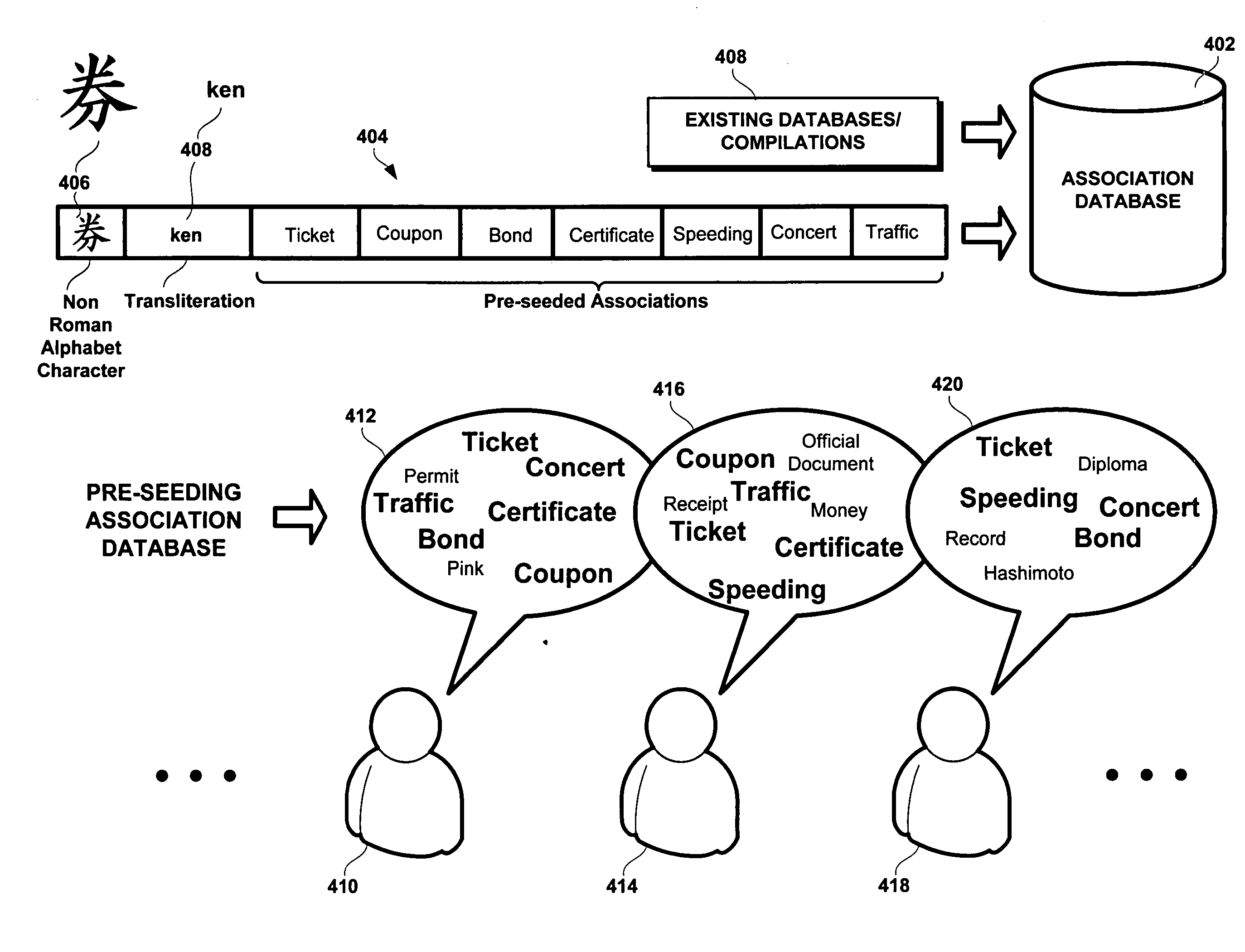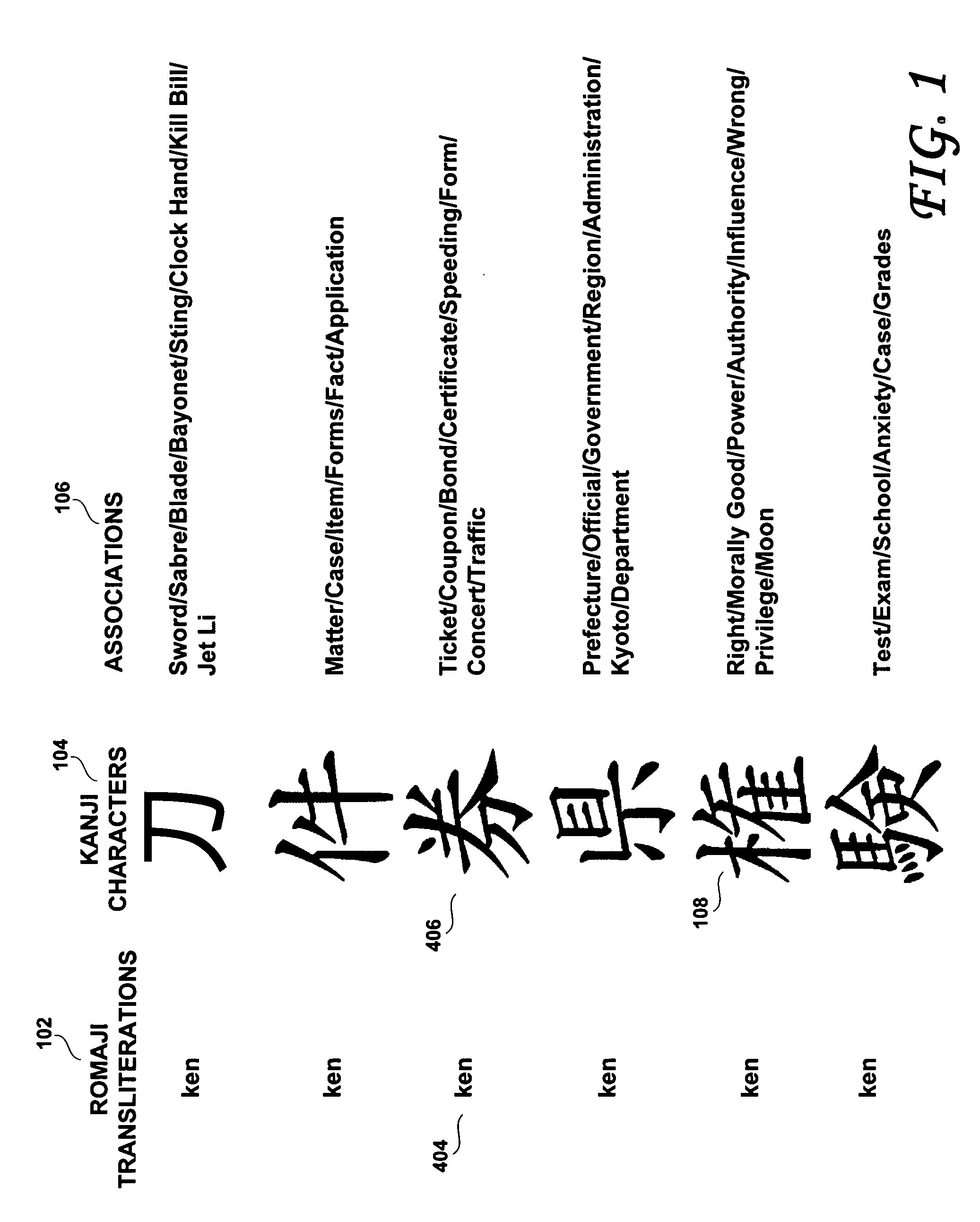Computer-implemented methods and systems for entering and searching for non-Roman-alphabet characters and related search systems
a technology of computer implementation and search system, applied in the field of computer implementation methods and systems for entering and searching for non-romanalphabet characters and related search system, can solve the problems of difficulty in searching for such characters without adequate methods, and insufficient size of keyboards
- Summary
- Abstract
- Description
- Claims
- Application Information
AI Technical Summary
Benefits of technology
Problems solved by technology
Method used
Image
Examples
Embodiment Construction
[0026] Even native speakers of languages whose written forms do not rely on the Roman alphabet, such as Japanese and the many Chinese dialects, typically recognize a far greater number of characters by sight than they are able to manually reproduce. Embodiments of the present invention enable a unique selection of a desired non-Roman character even when the user has but a dim, vague memory of what the desired character looks like. In so doing, embodiments of the present invention enable users to display an apparent greater command and skill in writing of characters than they actually possess by providing a phonetic pronunciation and one or more associated entries. Such entries may be made through a series of keystrokes, spoken words and / or any other computer-perceptible form of input (such as machine vision, for example). In so doing, embodiments of the present invention help users to successfully input a greater number of characters than the person really knows (or is really able t...
PUM
 Login to View More
Login to View More Abstract
Description
Claims
Application Information
 Login to View More
Login to View More - R&D
- Intellectual Property
- Life Sciences
- Materials
- Tech Scout
- Unparalleled Data Quality
- Higher Quality Content
- 60% Fewer Hallucinations
Browse by: Latest US Patents, China's latest patents, Technical Efficacy Thesaurus, Application Domain, Technology Topic, Popular Technical Reports.
© 2025 PatSnap. All rights reserved.Legal|Privacy policy|Modern Slavery Act Transparency Statement|Sitemap|About US| Contact US: help@patsnap.com



